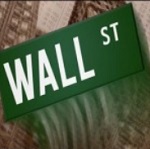by Pam Martens and Russ Martens, Wall St On Parade:

From revoking the American people’s right to a jury trial in matters involving Wall Street; to brazenly thumbing their nose at anti-trust law; to trading the stock of their own bank in the darkness of their own dark pools; to forming their own stock exchange; to committing serial felonies without being criminally prosecuted or having their bank charters revoked – Wall Street mega banks have drawn a law-free zone around themselves and are more dangerous today than they have ever been in U.S. history.
TRUTH LIVES on at https://sgtreport.tv/
The most dangerous eras for the American people versus Wall Street mega banks have been the late 1920s and 1930s; 2007 to 2010; and today. We know that today is the most dangerous era because we read 12,000 pages produced by the Senate Banking Committee of the early 1930s on the Wall Street corruption in the late 20s and 30s; we read every government report produced on the causes of the crash of 2008 and its aftermath, as well as every important book on the subject; and we have personally chronicled at Wall Street On Parade the unprecedented corruption of the Wall Street mega banks since 2008.
One key factor stands out in our mind as to why today’s Wall Street mega bank era is so much more corrupt and dangerous than earlier times: the failure of mainstream media to do its job.
For the past decade, mainstream media has failed to adequately report to the American people the activities of the Wall Street mega banks and the insidious role of the Federal Reserve in being their secret bailout kingpin. Consider what happened with the Fed’s so-called repo loan bailouts in the last quarter of 2019.
On September 17, 2019 the overnight repo loan rate spiked from an average of about 2 percent to 10 percent – signaling that one or more important Wall Street firms were in trouble. The repo loan market is an overnight loan market where banks, brokerage firms, mutual funds and others make predominantly one-day loans to each other against safe collateral, typically Treasury securities. Repo stands for “repurchase agreement.” When firms back away from lending to each other, someone is in trouble and spreading fear of the kind of contagion that occurred in 2008.
Because the repo market dried up, the Fed effectively became the repo loan market on September 17, 2019. It exponentially grew the amount of emergency repo loans it was making over the following months. And, instead of just making the customary overnight loans, the Fed also added loans lasting for weeks, up to 42-day loans in some cases. The dollar amounts of the Fed’s repo loans grew to staggering levels. On October 24, 2019, we reported the following:
“The New York Fed will now be lavishing up to $120 billion a day in cheap overnight loans to Wall Street securities trading firms, a daily increase of $45 billion from its previously announced $75 billion a day. In addition, it is increasing its 14-day term loans to Wall Street, a program which also came out of the blue in September, to $45 billion. Those term loans since September have been occurring twice a week, meaning another $90 billion a week will be offered, bringing the total weekly offering to an astounding $690 billion. It should be noted that if the same Wall Street firms are getting these loans continuously rolled over, they are effectively permanent loans. (That’s exactly what happened during the 2007-2010 Wall Street collapse: some teetering Wall Street casinos received, individually, $2 trillion in cumulative loans that were rolled over for two and one-half years – without the authorization or even awareness of Congress or the American people. One bank, Citigroup, received over $2.5 trillion in Fed loans, much of them at an interest rate below 1 percent, at a time when it was insolvent and couldn’t have obtained loans in the open market at even high double-digit interest rates.)”
The names of the banks receiving the repo loans in 2019 remained secret from the American people for two years. When the stunning data was finally released by the Fed, it received a total news blackout by mainstream media. We have never seen anything that unprecedented in our 40 years of working on Wall Street or covering Wall Street on this website. The names of the banks in desperate need of cash in the fourth quarter of 2019 included some of the biggest and most iconic names on Wall Street.
The Fed’s cumulative repo loans for the fourth quarter of 2019 on a term-adjusted basis came to $19.87 trillion, based on the data the Fed released two years later. Just six trading units of the Wall Street mega banks received 62 percent of the $19.87 trillion: Nomura ($3.7 trillion), JPMorgan ($2.59 trillion), Goldman Sachs ($1.67 trillion), Barclays ($1.48 trillion), Citigroup ($1.43 trillion), and Deutsche Bank ($1.39 trillion).
Read More @ WallStOnParade.com



